“Global Automotive Camera Market to reach a market value of USD 16.4 Billion by 2030 growing at a CAGR of 10.5%”
The Global Automotive Camera Market size is expected to reach $16.4 billion by 2030, rising at a market growth of 10.5% CAGR during the forecast period. In the year 2022, the market attained a volume of 30,455.3 thousand units, experiencing a growth of 9.7% (2019-2022).
Driver monitoring systems, equipped with attention monitoring and alertness detection features, help mitigate the risks associated with distracted driving. Consequently, the driver monitoring system segment captured $1,006.5 million revenue in the market in 2022. The increasing awareness of the dangers of distracted driving has led to a higher demand for driver monitoring system. Thus, the segment will expand rapidly in the coming years.
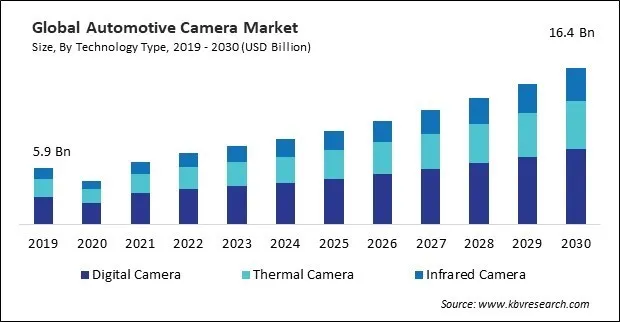
The major strategies followed by the market participants are Product Launches and Product Expansions as the key developmental strategy to keep pace with the changing demands of end users. For instance, In September, 2023, OmniVision Technologies, Inc. launched the OX08D10 8-megapixel (MP) CMOS image sensor with 2.1-micron (µm) TheiaCel technology. The OX08D10 8-megapixel (MP) CMOS image sensor has the features of low light performance and low power consumption within a compact size. The new product increases safety in automobiles and assists drivers through image quality. Additionally, In January, 2023, ZF Friedrichshafen AG introduced the Smart Camera 6. The new product offers the features of a 120-degree field of view and an image resolution of more than 4x higher. Additionally, the new product assists in urban and highway safety systems and automated driving.
Based on the Analysis presented in the KBV Cardinal matrix; Siemens AG is the forerunners in the Market. For Instance, In January, 2022, Denso Corporation launched the Global Safety Package 3. The new product utilizes the integration of the millimeter-wave radar sensor and vision sensor to offer the vehicles a high sensing capability of their surroundings. Additionally, the new product helps the drivers ensure the safety of their vehicles. Companies such as Robert Bosch GmbH, Denso Corporation, Aptiv PLC are some of the key innovators in Market.
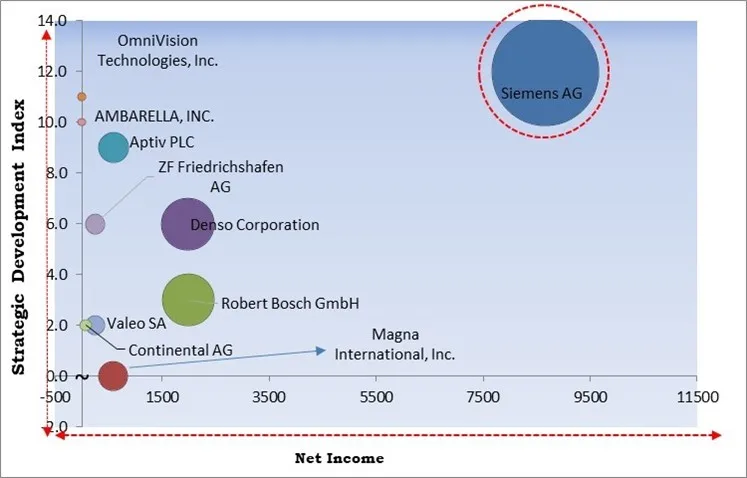
Governments and regulatory bodies worldwide increasingly prioritize road safety and raise the bar for vehicle safety standards. Regulatory frameworks, such as the New Car Assessment Programs (NCAP) in various regions, mandate the inclusion of specific safety features in vehicles to achieve certain safety ratings. Compliance with these regulations often involves the integration of advanced safety technologies, including these cameras. Lane departure warning systems, designed to alert drivers when unintentional lane departure occurs, and lane-keeping assist systems, which actively help steer the vehicle back into its lane, are becoming common safety requirements. Cameras play a central role in monitoring lane markings and detecting deviations, contributing to the effectiveness of these systems. Thus, these factors will help in the growth of the market.
Furthermore, increasing awareness of road safety issues, including the rising number of accidents and associated human and economic costs, has prompted a collective push for safer driving environments. With its safety-enhancing features enabled by these cameras, advanced driver assistance systems (ADAS) address this awareness by offering tools to mitigate risks and prevent accidents. A paradigm transition is occurring in the automotive industry towards autonomous driving. From monitoring lane markings to detecting obstacles and pedestrians, they provide critical information for ADAS functionalities. These cameras are instrumental in lane departure warning systems, which alert drivers when unintentional lane deviations occur. By continuously monitoring lane markings, cameras contribute to preventing accidents caused by drifting into adjacent lanes without signaling. Hence, these factors will lead to increased demand for these cameras.
Advanced camera systems generate vast data, especially those used in autonomous vehicles. Storing this data requires sophisticated and high-capacity storage solutions, which can be costly for manufacturers and end-users. Processing the immense data cameras generate in real-time is a computational challenge. It demands powerful onboard processors and algorithms, adding complexity to the overall system architecture. Transmitting large volumes of data between different components within a vehicle or to external servers can strain communication networks. Establishing clear guidelines on data ownership and control is crucial. Regulations need to define who owns the data generated by these cameras, how it can be used, and the rights of the individuals being monitored. Automotive manufacturers need to adhere to ethical standards in the use of collected data. Transparency about data usage practices and obtaining informed consent from users are essential for building trust. Therefore, these factors can hamper the demand for these cameras in the upcoming years.
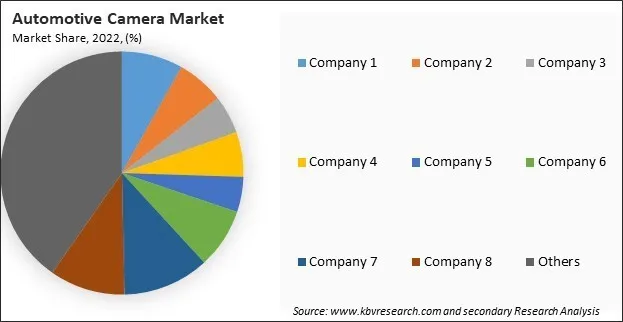
The leading players in the market are competing with diverse innovative offerings to remain competitive in the market. The below illustration shows the percentage of revenue shared by some of the leading companies in the market. The leading players of the market are adopting various strategies in order to cater demand coming from the different industries. The key developmental strategies in the market are Product Launches and Product Expansions.


Based on technology type, the market is segmented into digital camera, thermal camera, and infrared camera. The digital camera segment held the largest revenue share in the market in 2022. Digital cameras offer higher resolution and image quality compared to traditional analog cameras. High-resolution imaging is essential for accurate object detection, recognition, and tracking, supporting the development of more sophisticated and reliable ADAS applications. Thus, these factors will lead to increased demand in the segment.
Based on application, the market is divided into adaptive cruise control system, park assist system, blind spot detection, driver monitoring system, autonomous emergency braking system, lane departure warning system, and others. The blind spot detection segment procured a significant in the market in 2022. Blind spot detection is a crucial component of Advanced Driver Assistance Systems (ADAS). As the automotive industry advances toward semi-autonomous and autonomous driving, ADAS features, including blind spot detection, are becoming standard or optional in many new vehicles. As a result, there will be increased demand in the segment.
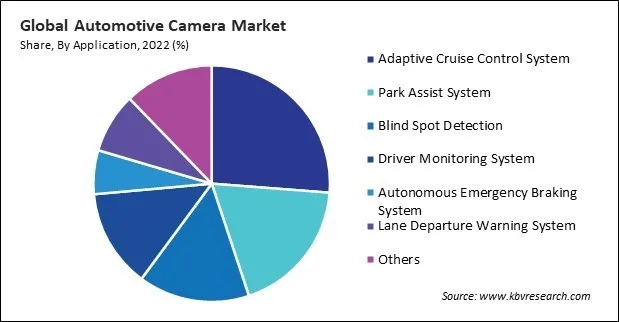
On the basis of vehicle type, the market is divided into passenger car, light commercial vehicle, and heavy commercial vehicle. The passenger car segment recorded the maximum revenue share in the market in 2022. While fully autonomous vehicles are still developing, the push towards autonomy has driven the integration of more advanced sensors, including cameras, in passenger vehicles. Features like lane-keeping assistance and semi-autonomous driving capabilities contribute to the appeal of these vehicles. Therefore, these factors will boost the demand in the segment.
Free Valuable Insights: Global Automotive Camera Market size to reach USD 16.4 Billion by 2030
By region, the market is segmented into North America, Europe, Asia Pacific, and LAMEA. The North America segment procured the highest revenue share in the market in 2022. The automotive industry in North America, particularly in the United States, has been witnessing a growing emphasis on safety regulations. Stringent safety standards and regulations, including requirements for advanced driver assistance systems (ADAS) and backup cameras, have driven the demand for . Thus, these factors will pose lucrative growth prospects for the segment.
| Report Attribute | Details |
|---|---|
| Market size value in 2022 | USD 7.5 Billion |
| Market size forecast in 2030 | USD 16.4 Billion |
| Base Year | 2022 |
| Historical Period | 2019 to 2021 |
| Forecast Period | 2023 to 2030 |
| Revenue Growth Rate | CAGR of 10.5% from 2023 to 2030 |
| Number of Pages | 367 |
| Number of Table | 643 |
| Quantitative Data | Volume in Thousand Units, Revenue in USD Billion, and CAGR from 2019 to 2030 |
| Report coverage | Market Trends, Revenue Estimation and Forecast, Segmentation Analysis, Regional and Country Breakdown, Competitive Landscape, Market Share Analysis, Porter’s 5 Forces Analysis, Company Profiling, Companies Strategic Developments, SWOT Analysis, Winning Imperatives |
| Segments covered | Technology Type, Application, Vehicle Type, Region |
| Country scope |
|
| Companies Included | Denso Corporation, Aptiv PLC, Siemens AG, Magna International, Inc., Valeo SA, OmniVision Technologies, Inc., ZF Friedrichshafen AG, AMBARELLA, INC., Robert Bosch GmbH, Continental AG |
By Technology Type (Volume, Thousand Units, USD Billion, 2019-2030)
By Application (Volume, Thousand Units, USD Billion, 2019-2030)
By Vehicle Type (Volume, Thousand Units, USD Billion, 2019-2030)
By Geography (Volume, Thousand Units, USD Billion, 2019-2030)
This Market size is expected to reach $16.4 billion by 2030.
Government regulations and safety standards are driving the Market in coming years, however, Data security and privacy concerns related to automotive camera restraints the growth of the Market.
Denso Corporation, Aptiv PLC, Siemens AG, Magna International, Inc., Valeo SA, OmniVision Technologies, Inc., ZF Friedrichshafen AG, AMBARELLA, INC., Robert Bosch GmbH, Continental AG
In the year 2022, the market attained a volume of 30,455.3 thousand units, experiencing a growth of 9.7% (2019-2022).
The Adaptive Cruise Control System segment is leading the Market, by Application in 2022; there by, achieving a market value of $4 Billion by 2030.
The North America region dominated the Market, by Region in 2022, and would continue to be a dominant market till 2030; there by, achieving a market value of $5.3 Billion by 2030.
Our team of dedicated experts can provide you with attractive expansion opportunities for your business.
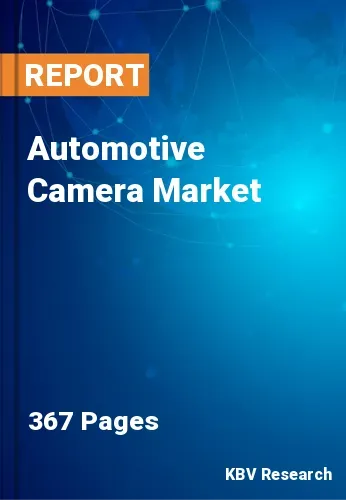
 Drivers
Drivers
 Restraints
Restraints
 Opportunities
Opportunities
 Challenges
Challenges
